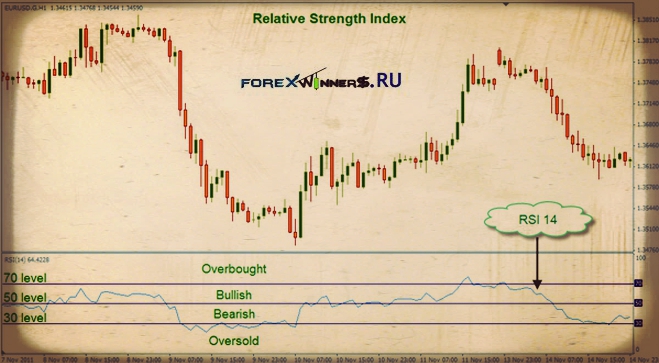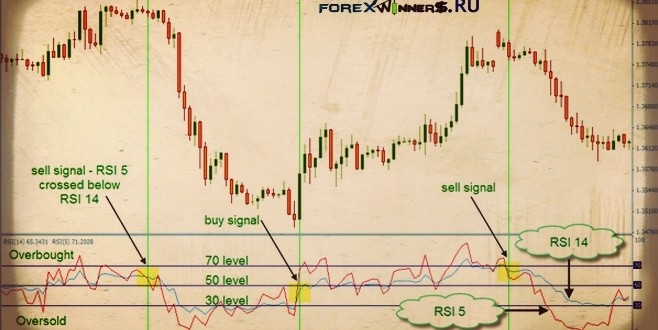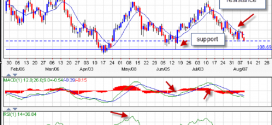Relative Strength Index (RSI)
The RSI is a momentum oscillator indicator , and it measures the speed and change of the price movement by comparing a market’s gains to its losses and plotting that on a 0 to 100 scale.

Basically, if the RSI is less than 30, it means the market is oversold and the price will eventually increase. Once the reversal is confirmed, a buy trade can be placed.
Conversely, if the RSI is more than 70, it means it’s overbought and the price will soon decline. After a confirmation of the reversal, a sell trade can be placed.
The 50 level is the midline that separates the upper (Bullish) and lower (Bearish) territories. In an uptrend, the RSI is usually above 50, while in a downtrend, it is below 50.
The RSI can be used to identify overbought and oversold conditions, trade midline crossovers, and trade divergences. But I use the RSI quite differently here. Lets check together ,,,
I apply a 5 period RSI (RSI 5) over the default 14 period RSI (RSI 14) and watch for crossovers.

With the RSI 14, there are times when the market does not reach the oversold or overbought levels before shifting direction. A short period RSI is more reactive to recent price changes, so it can show early signs of reversals.
When the RSI 5 crosses above the RSI 14, it means that recent prices are getting higher. A buy signal is generated.
When the RSI 5 crosses below and becomes lower than the RSI 14, it means recent prices are declining. This is a sell signal.
Edited by Mr Alex Michel from UK. 
 Forex Winners | Free Download Downlod free trading sysrems , indicators and forex E-books
Forex Winners | Free Download Downlod free trading sysrems , indicators and forex E-books

